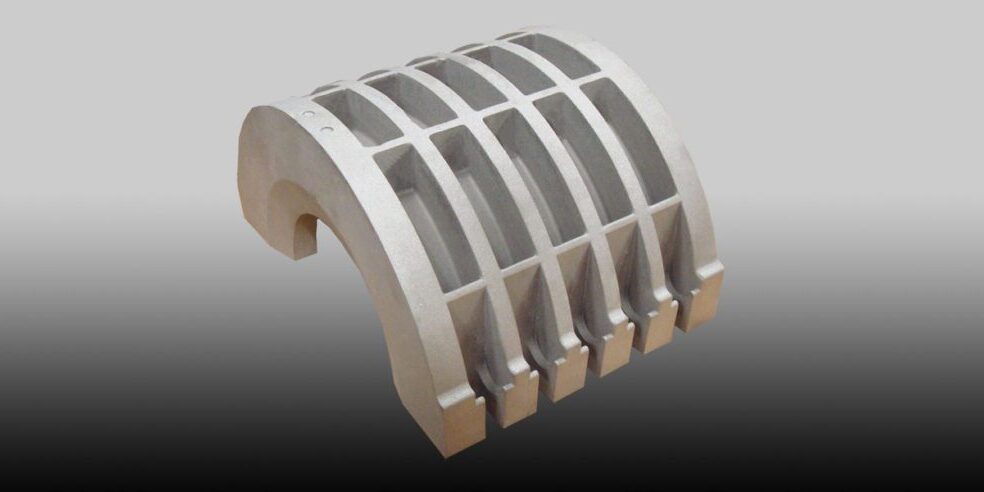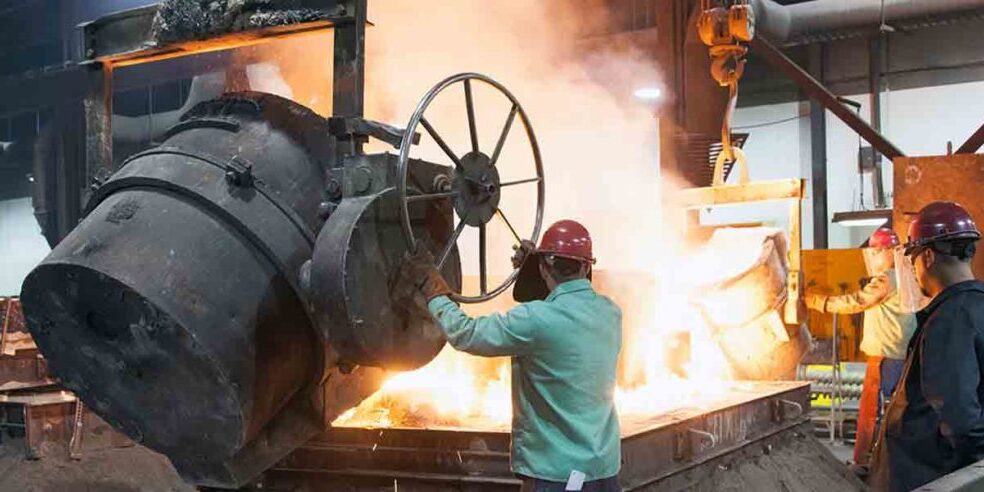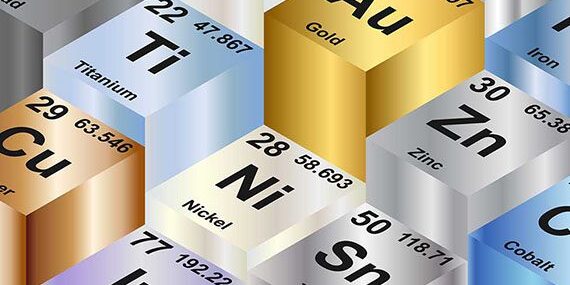Blog What is Vacuum Investment Casting?
By: Mike McCleary
Manufacturers in high-compliance industries such as aerospace, defense, and energy continually identify ways to improve the quality and precision of their metal components. One such advanced method is vacuum investment casting. If you are familiar with traditional metal casting processes but have not explored the potential of vacuum investment casting, this blog will offer insight into how it can improve the performance and quality of your parts.
What is Vacuum Investment Casting?
Vacuum investment casting is a specialized form of investment casting. While the traditional investment casting process takes place in open-air conditions, vacuum investment casting incorporates the use of a vacuum to improve precision and material integrity. The vacuum investment casting process is ideal for producing complex, high-quality metal parts with fine details, minimal defects, and superior mechanical properties.
In traditional investment casting, a wax pattern on a “tree” with identical patterns is coated with a ceramic slurry and stucco material to create a shell. The wax is melted away from the shell, leaving a hollow mold. After preheating, molten metal is poured into this mold to form the desired part. Vacuum investment casting enhances this process by using a vacuum to eliminate air and gas, reducing the risk of porosity and other casting defects.
How Does Vacuum Investment Casting Work?
The vacuum investment casting process follows a sequence of carefully controlled steps that improve upon the traditional investment casting process. Steps 1, 2, 3, and 6 below are identical to traditional investment casting. The critical differences are the vacuum furnace and vacuum chamber for casting.
- Wax Pattern Creation: Vacuum investment casting begins with the creation of a wax pattern of the part to be produced. This pattern is mounted onto a “tree” with identical patterns.
- Investment: Pattern is coated in multiple layers of ceramic slurry and stucco material to form a ceramic shell. This “investment” is allowed to dry and harden.
- Dewaxing: The shell is placed in an autoclave, which melts the wax pattern away. This leaves a hollow mold in the shape of the part.
- Preheating in a Vacuum Furnace: The mold is placed in a vacuum furnace, which removes air bubbles and gases. This prevents porosity and other internal defects in the final part.
- Casting in a Vacuum Chamber: The mold is transferred to a vacuum chamber for casting. The vacuum helps molten metal flow uniformly, filling intricate details and thin walls with even greater accuracy than traditional investment casting.
- Shakeout and Finishing: After solidification the ceramic shell is removed in a shakeout process, leaving the part. Normal finishing processes such as machining, grinding, and surface finishing are often not needed after vacuum investment casting.
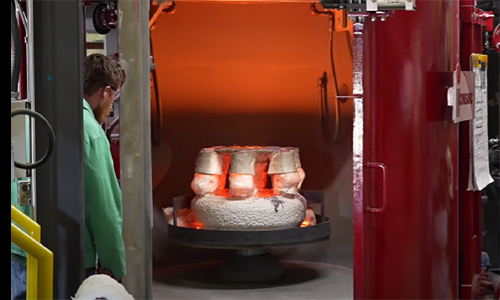
Why Use Vacuum Investment Casting?
Vacuum investment casting offers several distinct advantages over traditional investment casting:
Reduced Porosity and Defects
One of the biggest challenges in most metal casting processes is controlling gas porosity, which can weaken parts and ultimately lead to failure over time. The vacuum ensures that air and gas pockets are eliminated, resulting in more durable metal parts.
Superior Surface Finish
The vacuum investment casting process often results in an even smoother surface finish compared to traditional investment casting. This reduces the need for post-casting machining and surface treatments, reducing lead time and costs.
Complex Geometries
With vacuum investment casting, manufacturers can produce highly intricate designs that would be difficult or impossible to achieve with other metal casting processes. Vacuum investment casting excels at forming thin walls, sharp corners, and fine features, making it perfect for components with complex geometries.
Material Versatility
Vacuum investment casting is compatible with a wide range of metals and alloys, including stainless steel and nickel-based superalloys. This versatility makes it ideal for applications where specific material properties are critical to performance. Superalloys that contain reactive elements can easily be cast without being negatively affected by an oxygen rich environment.
Applications of Vacuum Investment Casting
The unique benefits of vacuum investment casting make it a preferred choice in industries where precision and material integrity are paramount. Common applications include:
Aerospace
Engine components and structural components often require high-strength, lightweight materials with intricate designs.
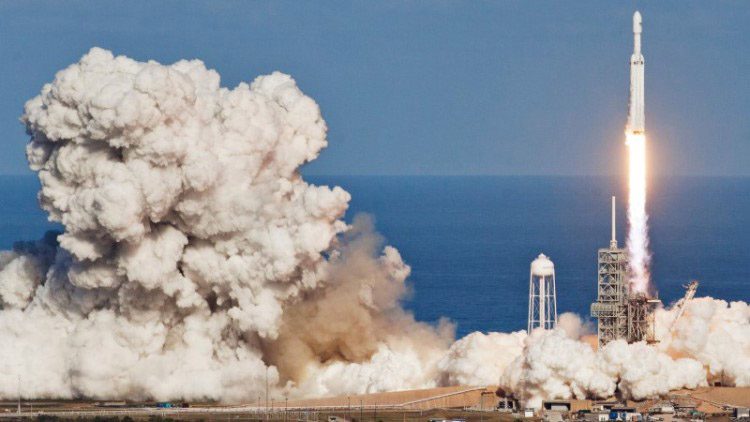
Defense
Critical components for naval systems and weapons systems benefit from the superior durability, precision, and performance offered by vacuum investment casting.
Energy
Components for gas turbines, pumps, and valves rely on the process for producing high-performance parts that operate in extreme conditions.
Is Vacuum Investment Casting Right for Your Application?
Traditional investment casting produces detailed metal parts with tight tolerances to customer specifications. Vacuum investment casting improves on these benefits, offering higher-quality parts with reduced porosity and smoother surfaces. This leads to better performance and durability. The process also enables the production of more intricate designs with greater precision, allowing customers to receive parts that meet tighter tolerances and more complex specifications. Super alloys can be used to improve part performance at high temperatures.
MetalTek’s Wisconsin Investcast Division uses both traditional investment casting and vacuum investment casting. Not sure which process is best for your application?
Contact us to learn more.
About the Author

Mike McCleary is Sales Manager for MetalTek’s Wisconsin Investcast Division. He joined MetalTek in 2008 and previously served as a Sales Engineer at MetalTek’s Wisconsin Centrifugal Division. Mike holds a BS in Mechanical Engineering from Marquette University.

